Update: The driver (power supply) died within a year. Details on that near the end.
I’d previously looked at the 135W GalaxyHydro (a UFO light which used 3W LED’s), as well as a couple E27-based grow led’s. The short version is that I was pretty pleased with the former, and less pleased with the latter, the latter having come from eBay.
This time I got a fairly generic (unbranded) 130W full spectrum grow LED from eBay. I wanted to get a little hands-on look at the whole “1W vs 3W led” bit when it came to the UFO’s, and figured something here might be enlightening.
If you’ve already seen the 135W GalaxyHydro write-up and take a look at both, superficially, this one looks pretty similar, with some notable exceptions:
- This one uses 132x1W leds (compared to 45x3W).
- This one is physically smaller (175mm vs 267mm).
- This one is about 1/2 the price.
A few external images of this one – the stock photo, and a couple I took with the camera (click for a larger version):
When turned on, visually it was quite bright: not nearly as blinding as the 45x3W GalaxyHydro, but it still had to be faced away from me to take pictures while it was running. The fan was quite loud.
Next: opening it up (click for larger versions).
Everything was packed in there fairly tight. Cables were tidy, and both the driver and fan’s power supply were held on by some thick double-sided adhesive pads.
I plugged it in while opened up. The backplate/heatsink for the leds actually got quite warm over the 15-20 second stints I ran it for when opened up. You certainly wouldn’t want to run it while opened up for any length of time. If the fan dies, I suspect the leds would probably overheat and die themselves soon after.
In any case, I took a couple quick measurements:
- Power from the wall was 41W.
- Voltage going to the LEDs was 29-30v.
…so somewhere in the neighborhood of 1.2 to 1.37 amps going to the led array, depending on how many watts the fan’s actually pulling and how efficient the driver is.
Those numbers were a little… interesting… for a couple reasons. The first will become a little more obvious with a close-up of the MERSLED driver (MERS-H8931A-C1200).
It very much *looks* like a constant current driver, but is rated at 300mA. The leds are pulling about 4X that, which kind of throws the whole constant current bit out the window. Since it’s also rated at 45-60V, it’s really rated for about 18 watts, compared to the ~40 watts the device is actually using. Try to match up what I measured with what the driver is rated at, and… well… you can’t. So either:
- The driver is mislabelled, or,
- The driver is being overdriven by about 20 watts (and might have a short life expectancy unless it was intentionally underrated), or,
- The manufacturer carefully selected, tested, and used this driver because despite the ratings, it’s providing the exact voltage/current they wanted and happens to be the largest driver that will physically fit in the case.
Alright, so before we conclude that they just “grabbed whatever looked like it fit in the case“, let’s look at what the LED’s should actually be pulling.
Trying to follow the many traces on the PCB was… an exercise. I counted 9 parallel runs starting from the edge, but I was only counting 12 leds in each of the runs I physically counted. We’ve got 132 LEDs on the PCB, so 9×12 (108 LEDs) obviously doesn’t match up. At this point I’m pretty sure the layout is either:
- 9 parallel runs of 12-16 leds each, or,
- 11 parallel runs of 12 leds each (more likely – either I was miscounting, or there was a parallel sub-split inside the “maze”).
Anyway, using the latter, each run is actually getting 110-125mA. This grow light claimed to use 5630 SMD leds, which tend to be rated at 100mA-150mA depending on the manufacturer. That’s actually pretty bang-on. 5630’s tend to hit their rated current in the 2-3V range (closer to 2V for red, closer to 3V for blue/UV), which means the measured ~30 volts is also in the right ballpark.
So far, so good.
—
A quick close-up look at the 80mm fan and it’s power supply:
The power supply’s rated current (0.5A) is half of the what the previous UFO grow light I looked at used (it was a 12V 1A constant current driver). While I’d certainly have appreciated a less-loud fan, the air that comes out of the device while running is quite warm, so I suppose a slower-running fan was probably out of the question. Update: I swapped out the fan for a much quieter one (less current, spins slower) and haven’t hit any heat issues yet.
—
A look at the grand scheme of things (and final thoughts)
I’ll start with the good stuff:
- The unit itself seemed to be constructed pretty well.
- Red / blue / white / IR (infra-red) / UV (ultraviolet) in reasonable proportions (78/33/10/6/5).
- The LED’s aren’t being heavily underdriven (like the E27’s I looked at previously were). You’re putting about as much power into them as you could reasonably want.
- The unit was really quite cost-effective for what you get.
Next, the potentially concerning stuff:
- If that driver isn’t mislabeled or under-rated, it might not last very long. Sure, there’s a loud fan moving a lot of air, but the driver is closer to a “sealed” design and if it’s actually being asked to run at about double it’s rating… well… that usually doesn’t bode well for total life expectancy.
- Fan-death concerns. It’s loud and spins fast. Often, loud & fast = early death for “PC-style” fans. Because the grow light puts out a good bit of heat that the fan has to dissipate, if the fan dies, the LEDs and the LED-driver-which-is-possibly-overdriven might end up in a race to see which can die first. And that race might only last a few minutes.
As far as concerns go, those aren’t too bad. Reason is, they’re guesses based on past experiences: guesses that may never come to pass. While I’ve seen a number of power supplies and fans die when pushed hard for long periods (and some that died well before they were asked to do any real work), I’ve also seen a few power supplies and fans that were subjected to really brutal demands and somehow kept going year after year as though they were new. For all I know, this grow light might be one of the quality “gems” out there that uses really high quality components yet manages to retain a low price.
Going back to the “3W vs 1W led” aspect I mentioned earlier, both this (130W) and the GalaxyHydro (135W) I’d looked at are advertised pretty closely in wattage. However, while the GH pulled 75W, this one pulled only 41W. The GH is certainly brighter.
While you could make the case that 5630SMD leds are often called 0.5W and that perhaps this should have been advertised as a 66W device (132 led x 0.5W), the fact that this was half the price but pushes out over half the wattage of the GH means it’s still a pretty reasonable deal… assuming the driver can keep up over the long term, that is.
That said, if you’ve only got the space for ONE grow light, keep in mind that this 130W model’s only going to push ~40 true watts. Not the greatest choice if you’re looking to maximize true wattage per unit / light / square foot / what have you, but certainly a reasonable choice if you’re looking at value when it comes to true wattage per dollar.
—
Previous write-ups referenced:
—
Update: Death of the driver (power supply)
After approximately 8 months of use, the LEDs started strobing (a slow-rate flicker). This symptom almost always presents when a constant current power supply (driver) can’t handle the load.
I opened up the driver to have a quick look, but there was nothing obviously burned, no buldged capacitors, etc.
At this time, I suspect that the driver was indeed labelled correctly. It was simply being run out of spec… something it was able to handle, but only to a point. Note that this grow light didn’t have a particularly *hard* life – a few 24/7 stints early on, but a couple months where it wasn’t used and lately it wasn’t getting more than 6 hours of constant use before getting a break of at least a couple hours (timer).
In any case, the simple option would be to grab a replacement driver from eBay for under $10. Since I’d originally measured 29-30v, one of the extremely common 10/20/30/50/100W LED drivers would probably do (since they tend to sit in the 30v range, it just depends on how much current I want to throw at the thing, driver physical size, and how much heat dissipation I’d want to deal with).
As luck would have it though, I recently ordered a new circuit board, a bunch of “3w” LED beads, and a new driver with the intention of putting together something custom in this enclosure anyway to test out an all red/white build. So it’s one of those things where it died at a really convenient time.



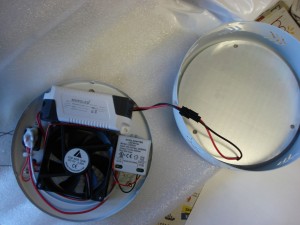
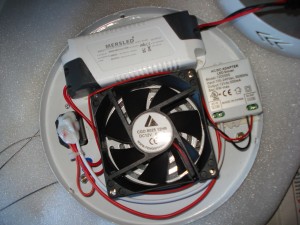
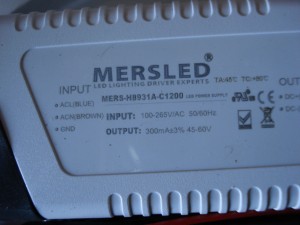
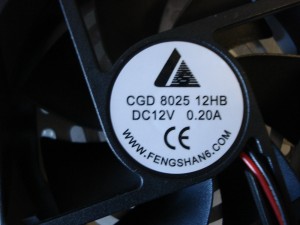
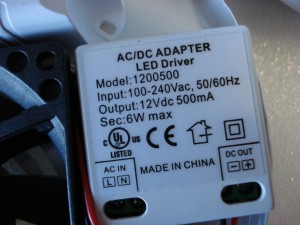
Good cheap LED to last while I save money to get a better one.
http://www.amazon.com/gp/product/B0129CMBYE